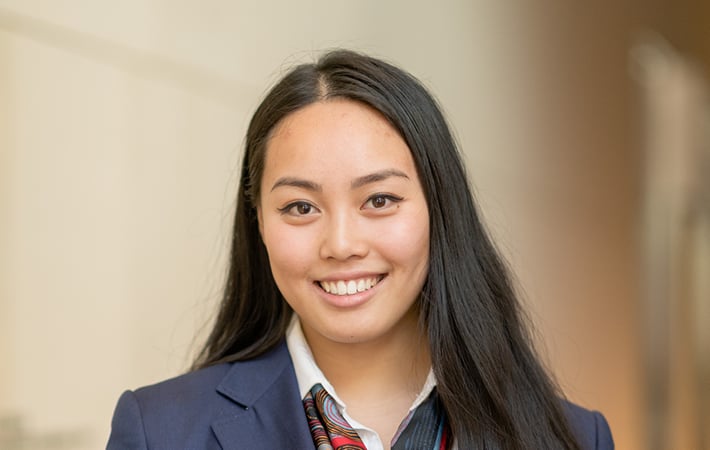We profile Kelly Chan and her family's Chinese legacy

We are delighted to profile Kelly Chan, a valued member of the International Towers concierge team
Kelly’s family has been performing ceremonial lion dances across Sydney for over 20 years and we are honoured to welcome them to Barangaroo. The dance - a ceremony to ward off evil spirits - is a particularly significant part of lunar New Year celebrations, as it establishes a pathway for good fortune for the year ahead.
What does your Chinese heritage mean to you?
My heritage is important because it keeps me connected to my family roots; especially while living in a multi-cultural country like Australia. During the New Year period it’s a great opportunity to celebrate not only the performance aspect of our culture; but also the food we eat together as a family and a community. The International Towers community prides itself on celebrating diversity and culture, so it’s such a privilege for my family to play a part in bringing this fun and lively aspect of Chinese culture to Barangaroo.
Tell us about your family’s connection to lion dancing.
My family has been performing for over 20 years. We believe it’s a great way to honour our culture and showcase our heritage, especially for people who may not have had much exposure to traditional Chinese culture. It’s a unique skill that’s been taught to my siblings, and passed on from previous generations, and it’s a wonderful way for the whole family to come together and be involved in something that’s close to all of our hearts.
What is the significance of the lion dancing at lunar New Year?
The lion represents courage, stability and superiority. The lion’s dance is performed to ward off ghosts and evil spirits, and since they are afraid of loud noises, the dance has become a natural complement to the noisy fireworks used at new year. Clashing cymbals, a gong and drums usually accompany the dancers. The lion’s every movement has a specific musical rhythm. The music follows the moves of the lion, and the Lion uses dramatic gestures and movement to scare away all the lingering ghosts.
What else is involved in the ceremony?
To empower the lion to do its duty, it is brought to life by an ‘eye-dotting’ ceremony. A powder (cinnabar) is soaked in water and used to paint dots on various parts of the Lion using a bamboo brush. This includes the mirror on the front of the lion’s head known as the ‘third eye’. A Ceremony Master usually performs the dotting, however we’ve invited some of our tenant partners to have a go, which is quite a contemporary way to engage community and honour tradition! After the dotting, the lion is “fed” a red pocket offering, and then bows three times before beginning the dance.

